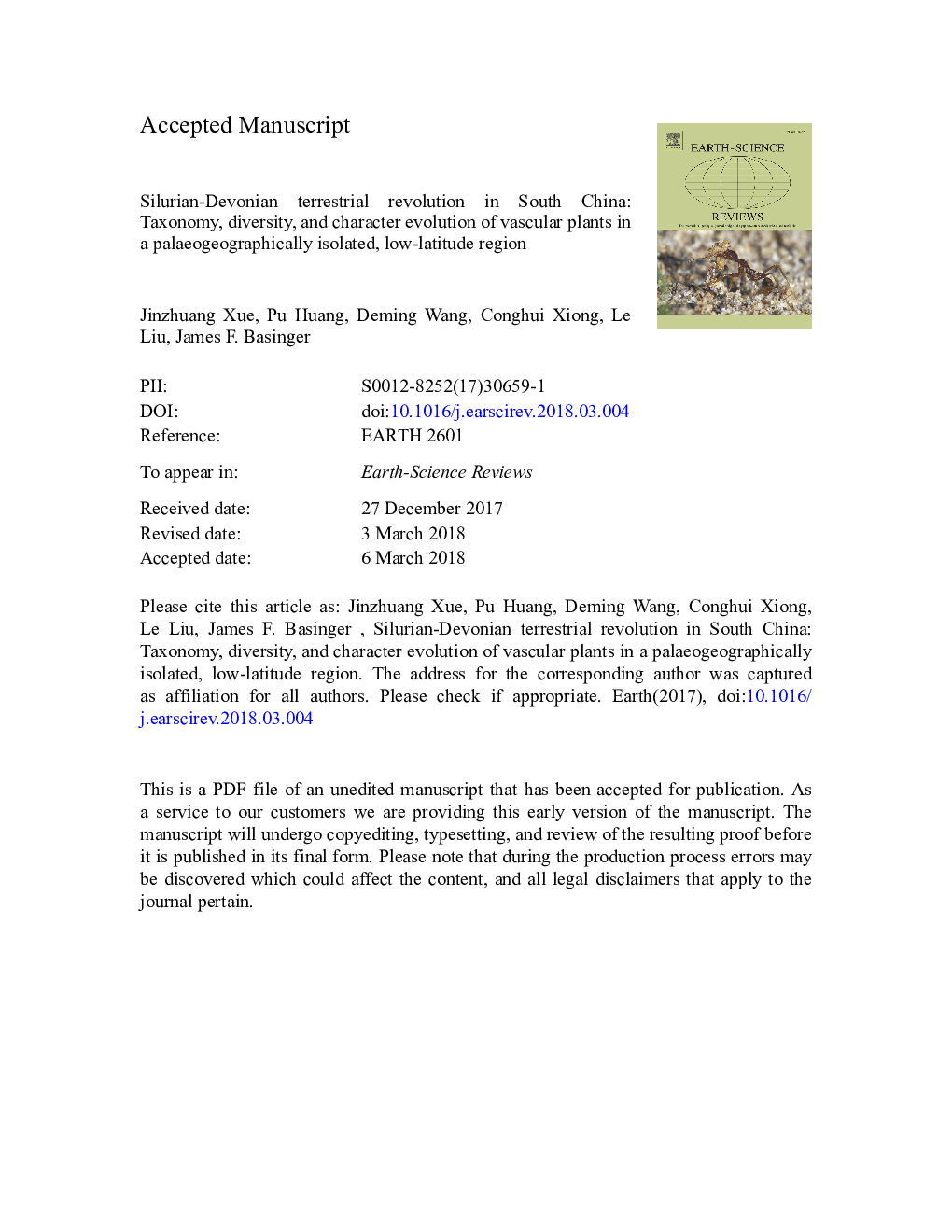| کد مقاله | کد نشریه | سال انتشار | مقاله انگلیسی | نسخه تمام متن |
|---|---|---|---|---|
| 8912953 | 1639922 | 2018 | 138 صفحه PDF | دانلود رایگان |
عنوان انگلیسی مقاله ISI
Silurian-Devonian terrestrial revolution in South China: Taxonomy, diversity, and character evolution of vascular plants in a paleogeographically isolated, low-latitude region
دانلود مقاله + سفارش ترجمه
دانلود مقاله ISI انگلیسی
رایگان برای ایرانیان
کلمات کلیدی
موضوعات مرتبط
مهندسی و علوم پایه
علوم زمین و سیارات
زمین شناسی
پیش نمایش صفحه اول مقاله

چکیده انگلیسی
The radiation of vascular plants during the mid to late Paleozoic has been considered one of the most important drivers of change in Earth's terrestrial environments. Non-marine deposits of the South China Block document plant diversification through the crucial Silurian and Devonian periods in a series of well-preserved fossil assemblages when this block occupied a paleoequatorial to low-latitude position and was isolated from the Laurussia paleocontinent. Significant plant fossils include the Pridoli and Early Devonian assemblages, from Yunnan and Sichuan provinces, southwestern China, and the Pragian Posongchong Flora from the Posongchong Formation of Wenshan, Yunnan. The Middle Devonian (Givetian) Haikou Formation and correlative strata supported diverse lycopsids and euphyllophytes, documenting landscapes with the first tree-like plants in South China. The Late Devonian Huangjiadeng, Xiejingsi and Wutong formations, particular the latter, preserve an abundance of lycopsids, fern-like plants, sphenopsids and seed plants, revealing complex plant communities. The taxonomic diversity in South China is characterized by a gradual increase from the Pridoli, with great diversification during the Pragian, a gap in the Emsian-Eifelian record, and a moderate increase in the Givetian and Frasnian, followed by a 2-3 times increase in the Famennian. Although the raw diversity pattern is somewhat obscured by different sampling intensity, the apparent increases during the Pragian and Famennian seem to be bona fide radiation events. Phytogeographically, the endemism of Early and Middle Devonian floras of South China has been supported by increasing paleobotanical data. The Late Devonian floras of South China began to share some, primarily arborescent species with other parts of the world. Axial diameter, leaf size, and multiple-character-based morphological disparity (mean pairwise dissimilarity) show stepwise evolutionary increase through the Devonian in parallel with the rise of taxonomic diversity. New integrative studies will further illuminate the terrestrialization process and the environmental impact of vascular plants.
ناشر
Database: Elsevier - ScienceDirect (ساینس دایرکت)
Journal: Earth-Science Reviews - Volume 180, May 2018, Pages 92-125
Journal: Earth-Science Reviews - Volume 180, May 2018, Pages 92-125
نویسندگان
Jinzhuang Xue, Pu Huang, Deming Wang, Conghui Xiong, Le Liu, James F. Basinger,